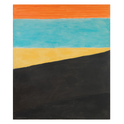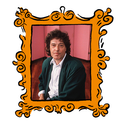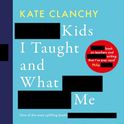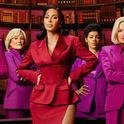In Tobias Wolff’s 2003 novel Old School, a group of arrogant literature students criticise Robert Frost, who is visiting their school to talk about poetry. One sums up his issues with Frost by saying: “I mean, he’s still using rhyme... Rhyme is bullshit. Rhyme says that everything works out in the end. All harmony and order. When I see a rhyme in a poem, I know I’m being lied to.”
Rhyme is one of the first ways we are introduced to language. There is evidence to suggest that it helps with language acquisition and other semantic development, and studies have also observed a link between rhyme and our aesthetic enjoyment of poetry. But among some literary circles, there is a snobbery about its use. Sceptics deride the use of rhyme as an artistic crutch, believing that it stands in way of achieving deeper, loftier literary aspirations. A common target of their ire is the rhyming dictionary—a handy manual full of avenues that poets of all abilities can run down. But while they may scoff, the long history of rhyming dictionaries shows their curious role in making poetry accessible to the masses.
Rhyming dictionaries have been around for millennia. The first is thought to be the Qieyun, a 601 AD Chinese rhyming dictionary that served as a guide to reading classical texts and aid composition. It would then take nearly 1000 years for the first Western rhyming dictionary to be introduced, a tome called the Manipulus Vocabulorum. It was written by English schoolteacher Peter Levins in 1570 as a reference for practicing poets. The introduction observes:
[su_quote]“It is necessarie for makers of meeter, so that it seemeth not only to redy him that maketh, but also to give him the way to learne the arte of the same.”[/su_quote]
Though there’s very little known about Peter Levins, a preface to the 1867 edition by Henry B. Wheatley explains that Levin's book was written partly out of a need to make a lower-priced dictionary so that “the poorer sorte may be able to bie it.” Levin’s egalitarian motivations may become even clearer by looking at the other book he wrote, A Right Profitable Book for all Disease, called the Pathway to Health. Wheatly writes: “[Levins] charges those who think books should be written in hard or unknown languages, and thus hide the knowledge of health from the people, as guilty of malice ‘exceeding damnable and devilish.’”
It seems Levin wanted to democratise learning, and this 19th century edition of his dictionary may have worked to that end. Afterwards, a spate of new rhyming dictionaries were introduced into the market: J. E. Carpenter’s A Handbook of Poetry (1868); Tom Hood’s The Rules of Rhyme (1869); Samuel W. Barnum’s A Vocabulary of English Rhymes, Arranged on a New Plan (1876); John Longmuir’s Rhythmical Index to the English Language (1877); and R. F. Brewer’s Orthometry: A Treatise on the Art of Versification (1893), among others. This was also the century when rhyming slang, back slang and punning were growing in popularity, so what may have been the preserve of the elite began flourishing in the working and middle classes too.
This alarmed some upper class poets of the day. Elizabeth Barrett Browning wrote in a letter to Thomas Westwood in the 1840s:
[su_quote]“You know as well as I do how the plague of rhymers, and of bad rhymes, is upon the land, and it was only three weeks ago that, at a ‘Literary Institute’ at Brighton, I heard of the Reverend somebody Stoddart gravely proposing ‘Poetry for the Million’ to his audience; he assuring them that ‘poets made a mystery of their art’, but that in fact nothing except an English grammar, and a rhyming dictionary, and some instruction about counting on the fingers, was necessary in order to make a poet of any man!”[/su_quote]
Barrett Browning’s quote picks out the root of this snobbery: if a rhyming dictionary can help anyone write poetry, can what they write really be considered poetry at all?
For Adam “Shuffle-T” Woollard, a popular UK battle rapper and co-author of The Advanced Rhyming Dictionary For Rappers and Poets, rhyming dictionaries aren’t a replacement for artistry, but rather a prompt. The introduction of his book, he says, “is all about explaining what this type of rhyme is, how to use it, and then it’s full of examples so you can use them yourself, but also add in your own—half of it is a workbook.” His book has received some high profile endorsements from artists like Odd Future’s Mike G and UK rap legend Roots Manuva, as well as others on the battle rap scene. It suggests that snobbery around rhyming dictionaries is easing.
Scottish spoken word performer Leyla Josephine is another advocate of rhyming dictionaries, but it’s in her work in education—she is also the current schools writer in residence for the Edinburgh International Book Festival—where she sees their benefits: “Young people really like to rhyme. The boundaries of rhyming actually give them a lot of freedom. They’ll be scared of just saying whatever, but if they find something that rhymes they’ll come up with something... If it’s a gateway for people to be able to express themselves I think that it’s a brilliant thing rather than something that should be looked down upon.”
I think back to that quote from Old School, and how accurately it captures a bolshy, arrogant, young poet by getting him to denounce something so fundamental and so elemental to our enjoyment of poetry. Rhyme is something that our brains click into instinctively. We have been playing with it for as long as we have been writing things down. Rhyming dictionaries have always been there to encourage that playfulness, to make writing less of a chore and more enjoyable. Maybe there are writers, poets, rappers, who want writing to be a chore; for it to feel like labour, like hard graft. Perhaps, but I’ll bet their work isn’t fun to read. And I bet it doesn’t rhyme.
What the history of rhyming dictionaries reveals about literary snobbery
For centuries, these guides have been met with distaste. But their roots are wholeheartedly democratic—and fun
April 24, 2020












